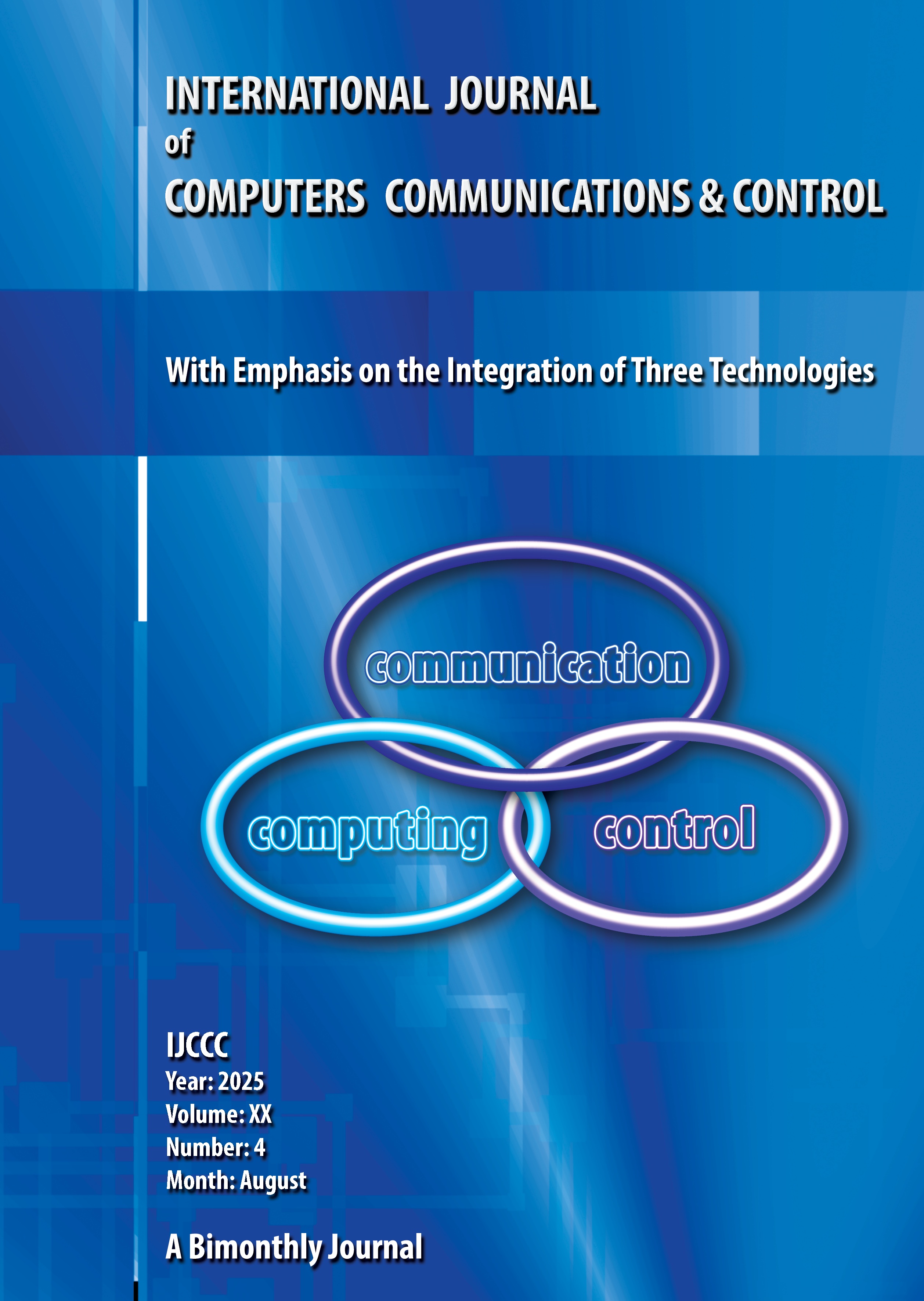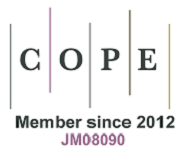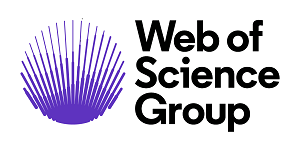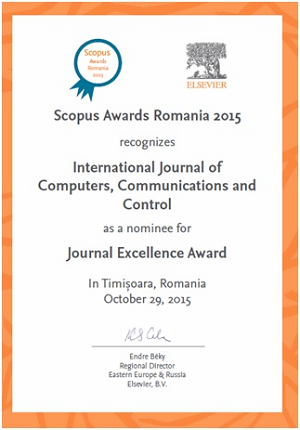A Systematic Review for Quality within the Automotive Industry 4.0
DOI:
https://doi.org/10.15837/ijccc.2025.4.7123Keywords:
artificial intelligence, automotive industry 4.0, qualityAbstract
Artificial Intelligence (AI) is exponentially developing within the quality management system (including quality assurance, quality development, customer satisfaction, etc.) within the automotive industry under the model of Industry 4.0. Within this paper, the application of AI technologies is analyzed for the enhancement of the quality processes and big data, so that higher standards of reliability and safety in automotive manufacturing are fulfilled. Machine learning, deep learning, convolutional neural network, computer vision as part of the AI solutions are used for the detection of the defects, to optimize the production parameters, to link the internal data with the external ones, with the final scope of the prediction of potential failures. The real-time data analysis is the most significant benefit for the automation of the big quality data, where AI improves the accuracy, eliminates the human error, and reduces considerably the production downtime. This research presents the major advantages and opportunities that AI solutions grant within the quality management field, underscoring its vital role for the achievement of higher quality standards, reducing costs associated with non-quality, and nurturing innovation. The findings underscore that the continuous integration of AI into quality assurance processes is essential for maintaining competitiveness and meeting the increasingly stringent demands of the global automotive market.
References
Luckow A., Kennedy K., Smith M.C., Artificial Intelligence and Deep Learning Applications for Automotive Manufacturing, IEEE International Conference on Big Data, Page 3144-3152, 2018. https://doi.org/10.1109/BigData.2018.8622357
Plorin, D., AI Reshaping the Automotive Industry, Artificial Intelligence for Digitizing Industry, River Publishers Series in Communications, Page 3-9, 2021. https://doi.org/10.1201/9781003337232-2
Dedy N., Zakuan N., Bahari Z., Ariff M., Chin T., Saman M., Identifying Critical Succes Factors for TQM and Employee Performance in Malaysian Automotive Industry, 4th International Conference on Manufacturing, Optimization, Industrial and Material Engineering, Volume 131, 2016. https://doi.org/10.1088/1757-899X/131/1/012016
Sonntag M., Mehmann J., Teuteberg F., Deriving Trust-Supporting Design Knowledge for AIBased Chatbots In Customer Service: A Use Case from the Automotive Industry, Journal of Organizational Computing and Electronic Commerce, Volume 33, Page 178-210, 2023. https://doi.org/10.1080/10919392.2023.2276631
Mourtzis D., Angelopoulus J., Arvanitis A.N., Panopoulos N., Automating Quality Control Based on Machine Vision Towards Automotive 4.0, IFIP WG 5.7 International Conference on Advances in Production Management Systems (APMS) - Smart Manufacturing and Logistics Systems - Turning Ideas into Action, 2022. https://doi.org/10.1007/978-3-031-16407-1_16
Gace I., Vdovic H., Babic J., Podobnik V., An eco-aware framework for AI-based analysis of contextually enriched automotive trip data, Energy Sources Part A-Recovery Utilization and Environmental Effects, Volume 45, Issue 1, Page 1274-1292, 2023. https://doi.org/10.1080/15567036.2023.2167020
Katona A.I., Validation of Risk-Based Quality Control Techniques: A Case Study from the Automotive Industry, Journal of Applied Statistics, Volume 49, Issue 12, Page 3236-3255, 2021. https://doi.org/10.1080/02664763.2021.1936466
Kamran S.S., Haleem A., Bahl S., Javaid M., Prakash C., Buddhi D., Artificial Intelligence and Advanced Materials in Automotive Industry: Potential Applications and Perspectives, 13th International Conference on Materials, Processing and Characterization (ICMPC), Volume 62, 2022. https://doi.org/10.1016/j.matpr.2022.04.727
Wolf D.W., Ulrich M., Braun A., Windscreen Optical Quality for AI Algorithms: Refractive Power and MTF not Sufficient, IEEE 26th International Conference on Intelligent Transportation Systems (ITSC), Page 5190-5197, 2023. https://doi.org/10.1109/ITSC57777.2023.10421970
Christie S., Prakash A., Ashton E., Tanner V., Enhancing Manual Visual Inspection Process by Using Opencv Ai and Anomalib for Defect Detection in Automotive Assembly and Manufacturing Process, ASME International Technical Conference and Exhibition on Packaging and Integration of Electronic and Photonic Microsystems (InterPACK), 2023. https://doi.org/10.1115/IPACK2023-111936
Park H.S., Phuong D.X., Kumar S., AI Based Injection Molding Process for Consistent Product Quality, 7th International Conference on Changeable, Agile, Reconfigurable and Virtual Production (CARV), Volume 28, Page 102-106, 2019. https://doi.org/10.1016/j.promfg.2018.12.017
Bucaioni A., Pelliccione P., Wohlrab R., Aligning Architecture with Business Goals in the Automotive Domain, IEEE 18th International Conference on Software Architecture (ICSA), Page 126-137, 2021. https://doi.org/10.1109/ICSA51549.2021.00020
Ramalho P.M.S., Campilho R.D.S.G., Silva F.J.G., Pedroso A.F.V., Sales-Contini R.C.M., Productivity Improvement of Control Cable Manufacturing Machine for the Automotive Industry, Mechanics Based Design of Structures and Machines, Volume 52, Page 9717-9740, 2024. https://doi.org/10.1080/15397734.2024.2349903
Caivano D., Catalano C., De Vincentiis M., Lako A., Pagano A., MaREA: Multi-class Random Forest for Automotive Intrusion Detection, 24th International Conference on Product-Focused Software Process Improvement (PROFES), Volume 14484, Page 23-34, 2024. https://doi.org/10.1007/978-3-031-49269-3_3
Poth A., Meyer B., Schlicht P., Riel A., Quality Assurance for Machine Learning - An Approach to Function and System Safeguarding, IEEE 20th International Conference on Software Quality, Reliability and Security, Page 22-29, 2020. https://doi.org/10.1109/QRS51102.2020.00016
Zhu X., Duan L., Abdullah A.Z., Research on the Reform of Higher Automotive Engineering Education Under the Background of Artificial Intelligence, 5th International Conference on Advances in Energy, Environment and Chemical Science (AEECS), Volume 245, 2021. https://doi.org/10.1051/e3sconf/202124503091
Phanden R.K., Sheokand A., Goyal K.K., Gahlot P., Demir H.I., 8Ds method of problem solving within automotive industry: Tools used and Comparison with DMAIC, International Conference on Materials Science and Sustainable Manufacturing Technology, Volume 65, Page 3266-3272, 2022. https://doi.org/10.1016/j.matpr.2022.05.383
Ramalho P.M.S., Campilho R.D.S.G., Silva F.J.G., Pedroso A.F.V., Sales-Contini R.C.M., Productivity Improvement of Control Cable Manufacturing Machine for the Automotive Industry, Mechanics Based Design of Structures and Machines, Volume 52, Page 9717-9740, 2024. https://doi.org/10.1080/15397734.2024.2349903
Barcena J.L.C., Ducange P., Marcelloni F., Renda A., Increasing trust in AI through privacy preservation and model explainability: Federated Learning of Fuzzy Regression Trees, Information Fusion, Volume 113, 102598, 2025. https://doi.org/10.1016/j.inffus.2024.102598
Zhang J., Pan S., Papalexakis V., Wang J., Cuzzocrea A., Ordonez C., Augmentation of Bodyin- White Dimensional Quality Systems through Artificial Intelligence, IEEE International Conference on Big Data (Big Data), Page1611-1618, 2021. https://doi.org/10.1109/BigData52589.2021.9671610
Additional Files
Published
Issue
Section
License
Copyright (c) 2025 Sondra Preascilla Ioana Vacarescu

This work is licensed under a Creative Commons Attribution-NonCommercial 4.0 International License.
ONLINE OPEN ACCES: Acces to full text of each article and each issue are allowed for free in respect of Attribution-NonCommercial 4.0 International (CC BY-NC 4.0.
You are free to:
-Share: copy and redistribute the material in any medium or format;
-Adapt: remix, transform, and build upon the material.
The licensor cannot revoke these freedoms as long as you follow the license terms.
DISCLAIMER: The author(s) of each article appearing in International Journal of Computers Communications & Control is/are solely responsible for the content thereof; the publication of an article shall not constitute or be deemed to constitute any representation by the Editors or Agora University Press that the data presented therein are original, correct or sufficient to support the conclusions reached or that the experiment design or methodology is adequate.








